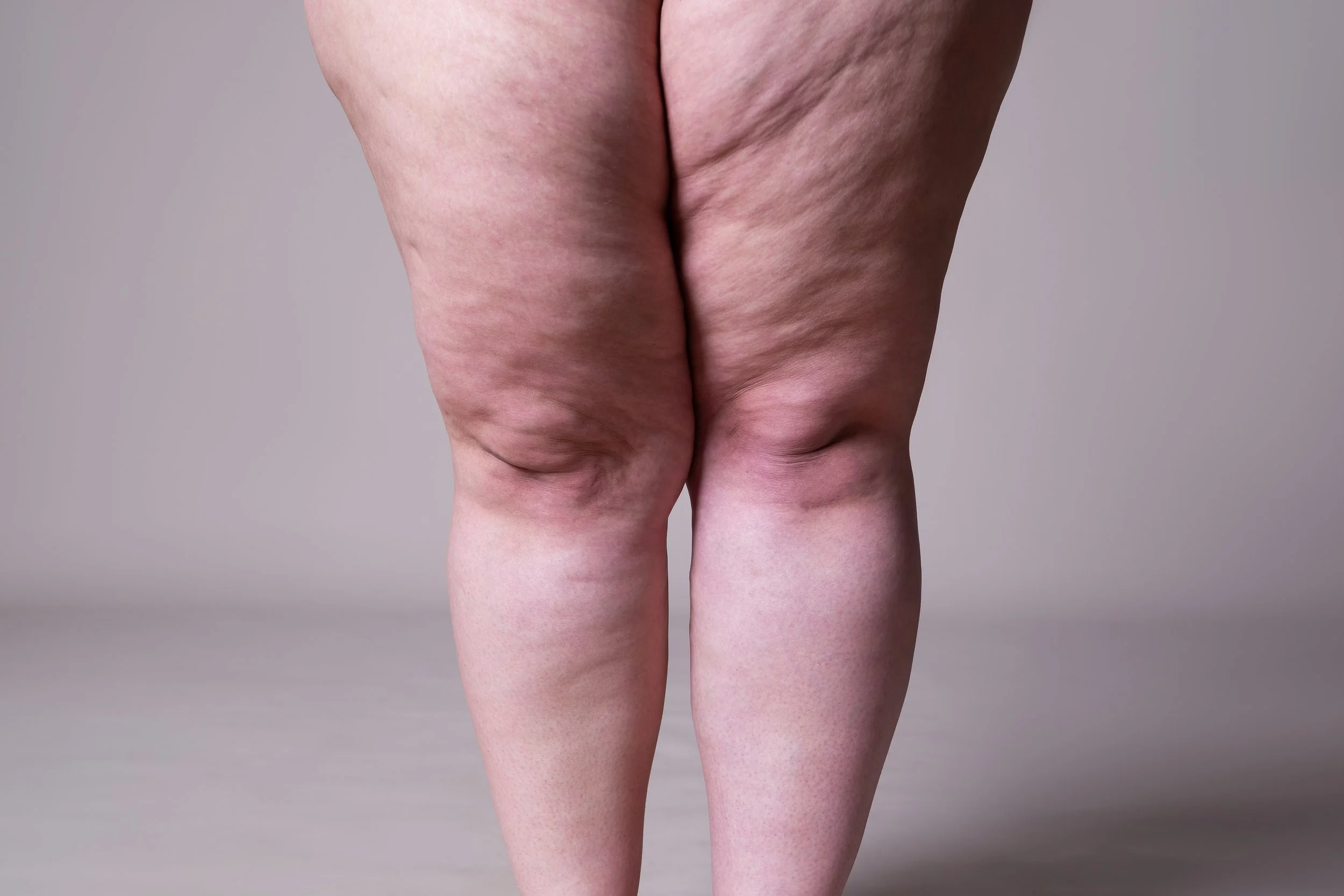What Is Lipedema: Symptoms, Stages, and How to Get Diagnosed
Though many believe it to initially be a problem of discipline, the chronic condition of lipedema will often go unnoticed. Usually displaying itself as an accumulation of fat around the legs and arms, this condition can cause both physical and emotional damage.
Though both sexes can suffer from this condition, it predominantly affects women. Yet because it can be disguised as simple weight gain, it is often mistaken for a general obesity condition or lymphedema, leading to misdiagnosis or delayed treatment.
Therefore, understanding the symptoms of lipedema is crucial and must include a full comprehension of disproportionate fat distribution, as well as the tenderness and pain that normally accompanies it.
Knowing the stages that a potential Lipedema condition progresses and how an increase in severity of symptoms presents itself, is a very important part of the process.
Yet even having some general knowledge does not negate the difficulty in obtaining a lipedema diagnosis. Therefore, getting expert advice that involves clinical evaluation, patient history, and physical examination can provide the necessary information to determine whether an individual suffers from this condition.
Understanding Lipedema and Its Symptoms
Lipedema is not simply a cosmetic concern but a medical condition that can cause serious issues and demands attention. This disorder causes an abnormal accumulation of fat in specific areas of the body, leading to various symptoms that can range from the mild to severe.
Identifying the symptoms of lipedema early is vital to treatment. Though they may vary, some common signs include tenderness and pain in the affected limbs. This pain can often be felt through light touch.
Another key symptom is the symmetrical buildup of fat in the legs and arms, as these areas are more susceptible to this condition. Unlike normal weight gain, in which fat is distributed more evenly, lipedema shows itself in concentrated areas.
In addition, the increase in the occurrence of easy bruising is also prominent, as people suffering from lipedema will often display skin discoloration from light pressure..
Here are some primary symptoms of lipedema:
Disproportionate fat accumulation
Tenderness and pain
Sensitivity to touch
Easy bruising
Non-pitting edema (skin doesn't indent under pressure)
In recognizing these symptoms, individuals who may have lipedema, can be more proactive in seeing a physician to obtain a proper diagnosis. Unfortunately, even when there are abundant signs that there may be a problem, many people will endure symptoms for years before understanding or seeking professional advice. Early identification is crucial for managing lipedema effectively. Proper management can help prevent the progression into the more severe stages.
The Stages of Lipedema
Like many medical conditions, lipedema usually progresses through distinct stages, each marked by worsening symptoms. By being aware of symptoms, intervention can be had earlier in the process, and aid in a more effective treatment. In other words, the sooner lipedema is identified, the better the management outcomes.
Stage 1 features a smooth skin surface that is different from the surrounding areas, and is accompanied with an increase in fatty tissue underneath. This stage is often subtle and makes it more susceptible to being overlooked.
Stage 2 introduces more distinct and profound changes. The skin will often be uneven, and take on a dimpled or lumpy look.
By Stage 3, the symptoms become more serious and severe. Large folds of fat can develop, leading to significant changes in appearance as well as tenderness.
The final stage, Stage 4, is known as lipo-lymphedema. This stage involves lymphedema along with the already present symptoms of lipedema. It can also involve accompanying swelling and fluid retention.
How to Diagnose Lipedema
Because lipedema symptoms can overlap with other conditions. It is often mistaken for obesity or lymphedema. In order to obtain a proper diagnosis, a knowledgeable healthcare provider familiar with lipedema will need to do a comprehensive evaluation.
An examination for this condition involves both a clinical assessment and consideration of the patient’s history. Healthcare providers must also rule out other conditions. Family history can also provide vital clues, given the potential genetic link.
Physical Examination and Imaging Studies
While a physical examination can identify unique lipedema symptoms, a detailed assessment is required to differentiate lipedema from similar conditions.
While there is no one test that specifically diagnoses lipedema, imaging studies, like ultrasounds can be used, as they help rule out conditions like lymphedema.
Treatment Options for Lipedema
Treating lipedema can be very involved and includes several strategies, depending on severity. Patients will generally be given a comprehensive plan that encompasses both conservative and surgical interventions. These treatments aim to manage symptoms and halt progression.
Conservative approaches prioritize non-invasive methods. They serve as the first line of defense in managing this condition. However, in more advanced cases, surgical options are usually the most effective method and provide more extensive relief.
The treatment plan may include the following elements:
Compression therapy to help reduce swelling
Manual lymphatic drainage to stimulate lymph flow
Dietary and lifestyle adjustments for overall health
Emotional and psychological support services
The coordination among a patient’s healthcare team will better ensure a more personalized and effective approach. This collaboration enhances treatment efficacy as well as patient satisfaction.
Surgical Options
When surgical intervention becomes the necessary choice, liposuction is usually most effective in removing the excess lipedema fat. Not only does it improve the aesthetic appearance, It provides substantial relief when other methods fall short.
When performed by a skilled surgeon, lymph-sparing liposuction is an effective specialized technique. It removes fat while preserving lymph function, crucial for managing the condition effectively. Beverly Hills Surgeon Dr. Robert Applebaum recommends researching to find a qualified board certified surgeon to perform this treatment.
Emotional Support and Counseling
Living with lipedema can not only affect physical health, but mental well-being as well. Therefore, receiving emotional support is as important as physical treatment. Counseling helps patients cope with body image issues and psychological distress.
In addition, support groups offer peer connection and understanding, allowing for the sharing of experiences in a supportive environment. This can significantly alleviate emotional burdens and help as those progress during their treatment and aftercare.
Living with Lipedema: Management and Support
Living with lipedema is a process of adapting to daily challenges. Through ongoing management for those who suffer from this condition, they can better their mobility and quality of life.
Self-care routines and consistent practices tailored to individual needs can go a long way to improving daily life. In addition, support networks play a crucial role in managing lipedema from both a physical and mental aspect.
Lifestyle Adjustments
Lifestyle adjustments can help manage the physical aspects of lipedema. Modifying clothing or wearing compression garments daily can reduce swelling. These small changes can lead to big differences in symptom relief.
Conclusion: The Path Forward for Lipedema Awareness and Treatment
By being aware of the symptoms and education, you can dramatically improve lipedema care. Through a more detailed understanding, a more timely diagnosis can be obtained leading to effective management. Advocacy and research are continuing to drive positive change and are pushing toward future breakthroughs. With ongoing support, individuals can navigate the challenges and treatment of lipedema with confidence and dignity.

